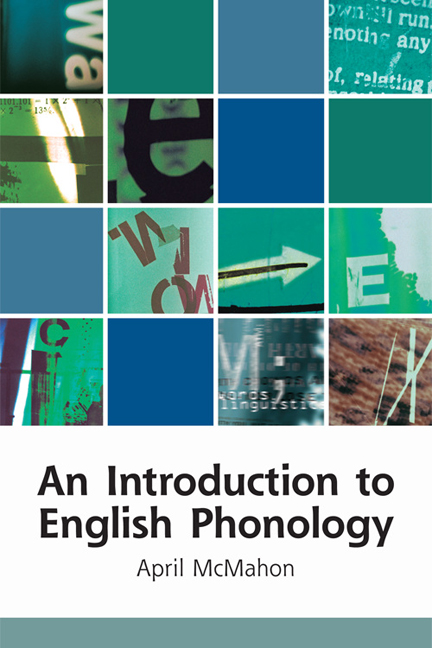Book contents
- Frontmatter
- Contents
- To colleagues
- 1 Sounds, spellings and symbols
- 2 The phoneme: the same but different
- 3 Describing English consonants
- 4 Defining distributions: consonant allophones
- 5 Criteria for contrast: the phoneme system
- 6 Describing vowels
- 7 Vowel phonemes
- 8 Variation between accents
- 9 Syllables
- 10 The word and above
- Discussion of the exercises
- References
- Index
3 - Describing English consonants
Published online by Cambridge University Press: 13 October 2018
- Frontmatter
- Contents
- To colleagues
- 1 Sounds, spellings and symbols
- 2 The phoneme: the same but different
- 3 Describing English consonants
- 4 Defining distributions: consonant allophones
- 5 Criteria for contrast: the phoneme system
- 6 Describing vowels
- 7 Vowel phonemes
- 8 Variation between accents
- 9 Syllables
- 10 The word and above
- Discussion of the exercises
- References
- Index
Summary
What's inside a phonetic symbol?
So far, we have considered the IPA essentially as an alternative writing system, which allows us to express a larger range of sounds than the English spelling system would. However, looking only at those symbols might suggest that we are dealing with individual, self-contained units when we consider phonemes and allophones: each is like a locked black box labelled with an IPA symbol.
In fact, each IPA symbol is shorthand for a whole range of properties, and those properties explain how the particular segment being symbolised is pronounced; unpacking the black box for each sound reveals not a jumble, but an internal structure, and understanding that structure allows us to make comparisons with other sounds. When we know that [k], for instance, is a voiceless velar plosive, we can start to see what properties it shares with other sounds which might also be voiceless, or velar, or plosives; we can also see how it differs from other sounds which are not voiceless, or velar, or plosives. Furthermore, we shall see what properties different allophones of the same phoneme share, which might allow them to be regarded as ‘the same’ by speakers of English: that is, we can work out what particular phonetic features speakers of English tend to ignore, and which they are aware of. Since this may be very different for speakers of other languages, unpacking IPA notation in this way also allows cross-linguistic comparisons to be made. In this chapter, we shall therefore consider a very basic set of phonetic features which enable us to describe the articulation of the consonants of English, and to assess their differences and similarities.
Consonant classification
A biologist looking at some particular creature wants to know various things about it, to work out where it should be placed in conventional biological classification. Some properties are visible and therefore easy to work out, such as how many legs it has or whether it has fur, feathers or scales. In other cases, closer observation will be needed: tooth shape cannot usually be checked from a distance. Still other properties are behavioural, and our biologist might need to observe her creature over a longer period of time to figure out whether it lays eggs or bears live young, or what it eats.
- Type
- Chapter
- Information
- An Introduction to English Phonology , pp. 23 - 35Publisher: Edinburgh University PressPrint publication year: 2016



